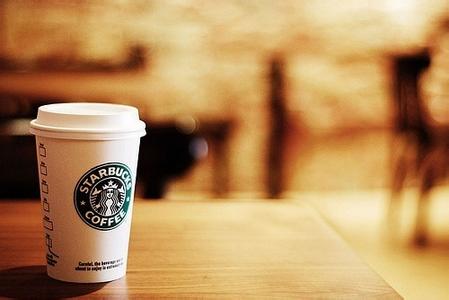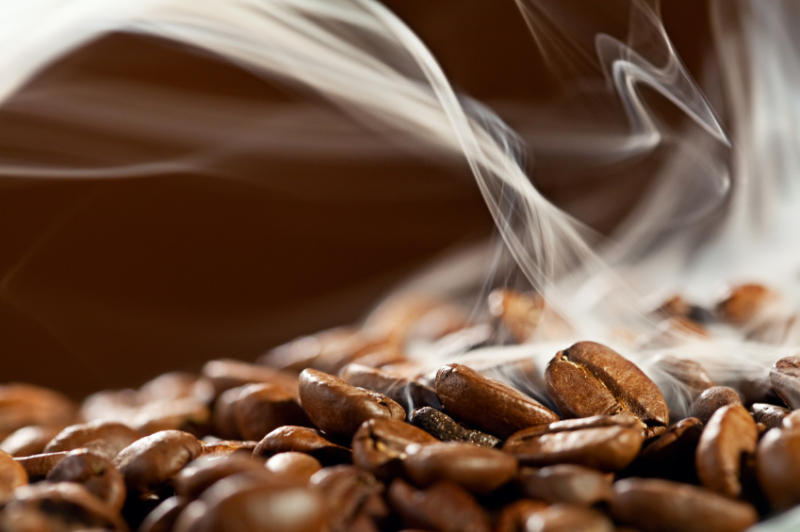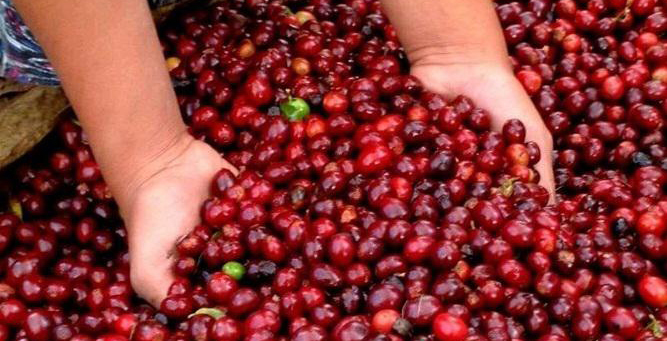Open braised | Why is the American style of Starbucks so bitter?

In addition to the ubiquitous storefronts and super-large white paper cups, Starbucks coffee is most impressive because of its bitter flavor-deeply roasted coffee beans are a choice given to it by history and reality, and it has also become a heavy burden for Starbucks. Today, let's pick up why Starbucks coffee beans are roasted so deep.
[historical background: the teacher is deeply baked]
In 1966, Alfred Peet, a master of deep baking, opened a coffee shop in Berkley, San Francisco. His past experience of producing areas in Sumatra enabled him to taste strong and strong coffee and clarified his concept of deep baking. Peet's pursuit of deep-roasted coffee is to use the best boutique coffee beans, showing a rich and strong bitter feeling.

In 1971, the first Starbucks opened in Seatle. The three founders, Jerry Baldwin, Gordon Bowker, and Zev Sieg, were three students of Peet. Because these three Yuan teachers inherited Peet, their roasting and presentation of coffee naturally followed master's school of heavy roasting.
At that time, only coffee beans were sold in the store, allowing consumers to take the beans home and taste them by French pressure or drip filtration. Although such heavy roasting weakens the origin characteristics of coffee beans, but under the control of good baking technology, it can be scorched without bitterness, showing a lot of Mena and caramel reaction products, but also attracted a large number of heavy taste enthusiasts.
[business choice: focus on production]
Until 1987, the current CEO of Starbucks bought Starbucks from three veterans and borrowed from Italian cappuccino, introducing espresso equipment and bringing the trend of espresso (with milk).
With the charm of syrup and milk coffee, Starbucks has grown rapidly in more than 20 years, opening nearly 22000 stores around the world. At the same time, the sharp increase in usage means that industrial scale production has become inevitable. The industrial roasting processing of coffee beans has led to a significant decline in the quality of coffee beans, which can not be skillfully adjusted by roasters according to raw bean batches and weather.

The large demand for coffee beans has forced Starbucks to abandon the boutique coffee beans at the top of the pyramid and look down for commercial coffee beans. In addition, the flexibility and flexibility of the giant baking equipment is not as good as that of the small roaster, so it is no longer possible to achieve precise control, which makes the bitter taste of coffee beans become obvious!
[flavor demand: milk coffee balance]
The espresso drink with milk itself has become one of the important considerations to determine the degree of baking. The extraction of coffee becomes relatively easy with the deepening of roasting (in this case, it is easy to extract extractable substances), so deep-roasted coffee beans, it will be easier to extract a lot of substances (not just the local flavor!), these extracted substances represent a strong coffee flavor. In other words, only such coffee beans, when made into espresso, can more easily resist the strong flavor of milk, so that consumers can drink the taste of coffee in a milky drink.

In particular, Starbucks' cups basically take off from 12oz. If you don't use a heavy mix, the coffee will be too light after adding milk, which will immediately cause consumers' unease, thinking that the cafe has cut corners and deliberately put a little coffee.
Heavily roasted coffee beans are at risk of overextraction, so Starbucks has replaced baristas with fully automatic coffee machines in recent years to keep baristas from screwing up the product. Even if the automatic coffee machine accidentally excessive extraction, anyway, added so much milk, consumers can not drink it, this is Starbucks smart place ah!
[deal with the trend of shallow baking]
However, in recent years, Starbucks can not resist the pressure of shallow roasting of boutique coffee. In 2012, Starbucks launched a series of Blonde Roast products to meet the market demand, and launched the largest-ever drinking trial in the same year. How did the market react? Starbucks did not give specific sales figures, saying only that Blonde roast was a very successful product line and pried open 40 per cent of the US market that did not like deep baking.

Starbucks, which is burdened with deep baking baggage, skillfully uses super-large cup volume and fully automatic coffee equipment to cover up the possible crisis of bitterness and over-extraction, so it can reach the current scale of the international market, but, how long can Starbucks resist the regional flavor of shallow baking?
For more boutique coffee articles, you can click here:
Coffee Science Room | Coffee beans are not beans? Yes, it is. Start with this little coffee bean and walk into the interesting world of coffee.
Coffee Science classroom | the effect of deep roasting on the flavor of coffee beans: roasting will greatly affect the sour, bitter, and native flavor of a type of coffee, so what is the relationship between them?
Italian VS handmade | Coffee Science classroom: there are tens of thousands of kinds of coffee. I just want to divide them into two categories-one is called espresso, the other is called non-Italian.
Author | Charles Huang Junhao

Won the runner-up in the Taiwan barista contest in 2010
At the same time, roasters are designated for Taiwan representatives of the World Barista Competition (WBC).
In 2011, he obtained the highest level of Q-GRADER certificate of SCAA/CQI certification.
China's first COE international referee
Important Notice :
前街咖啡 FrontStreet Coffee has moved to new addredd:
FrontStreet Coffee Address: 315,Donghua East Road,GuangZhou
Tel:020 38364473
- Prev

International Coffee Day, let's talk about Yunnan beans.
Jiaxiang Guide: October 1, 2015, as the world's first coffee day, China's coffee industry seems to be more excited than the National Day. Although China is not yet a member of the International Coffee Organization, Yunnan Douzao is currently the fastest growing bean in China. Will Yunnan Dou lead China into the world coffee industry in the near future? Wait and see ~ in China, have a cup of Yunnan
- Next

Coffee Xiaobai classroom, how much do you know about coffee beans?
The history of coffee beans first tell you the historical story of coffee beans. Legend has it that around the tenth century AD, on the Ethiopian plateau of Africa, a shepherd Carl found sheep excited after eating some kind of red fruit. As a result, Carl distributed this incredible red fruit to the locals, and its magical effect spread. Picture: coffee tree
Related
- Why are the coffee in some coffee shops not enough after being frozen? What should I make up for my American latte cappuccino coffee after being frozen?
- How much water does it take to steam coffee by hand? Why is the coffee brewing and steaming time 30 seconds? What is the purpose of steaming coffee?
- The suspected drink contains too much caffeine! Overlord Tea Lady responds urgently!
- Starbucks rejects antique paper coupons?! Netizen: Missed marketing opportunities!
- What ratio of water temperature and ground does the smart cup method use to press coffee? The difference between brewed coffee and filtered coffee?
- What is the standard process for the purpose of coffee cup testing? What is the difference between hand-brewed coffee and cup testing?
- How to use hand-brewed coffee paragon small golden balls? How does cold coffee lock in the aroma of coffee?
- Is American coffee black? What is the difference between American coffee and drip coffee?
- Unexpected! Well-known tea beverage brand Lele Tea will withdraw from the Zhengzhou market!
- Starbucks enters the fashion and beauty industry?! Netizen: Give me an ice American eye cream

